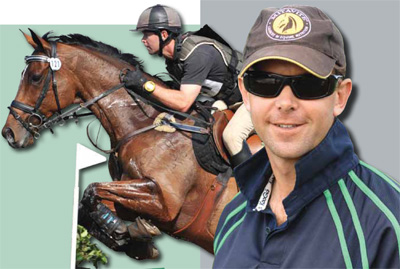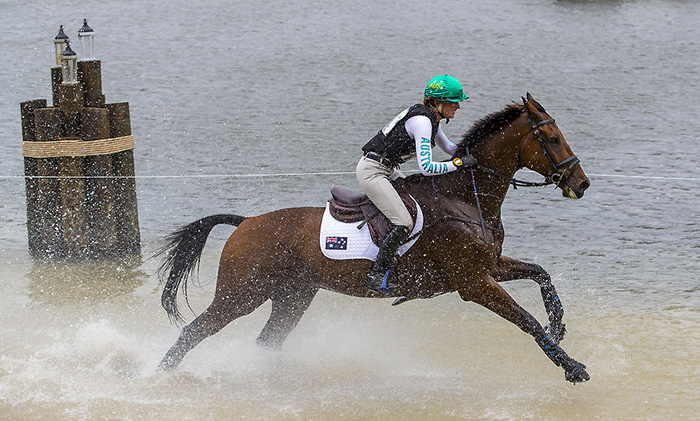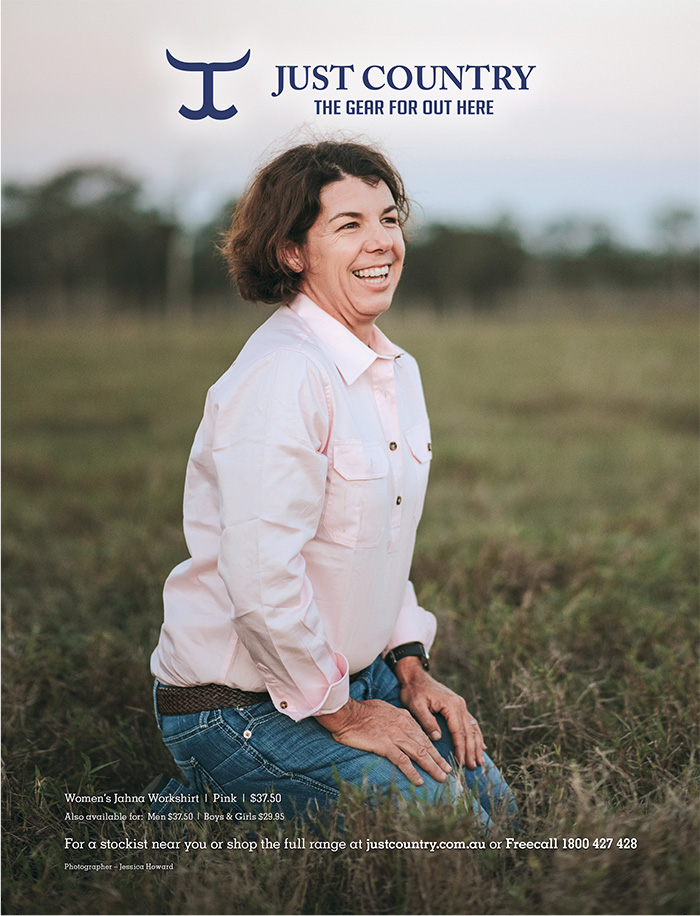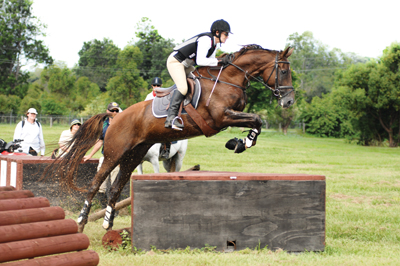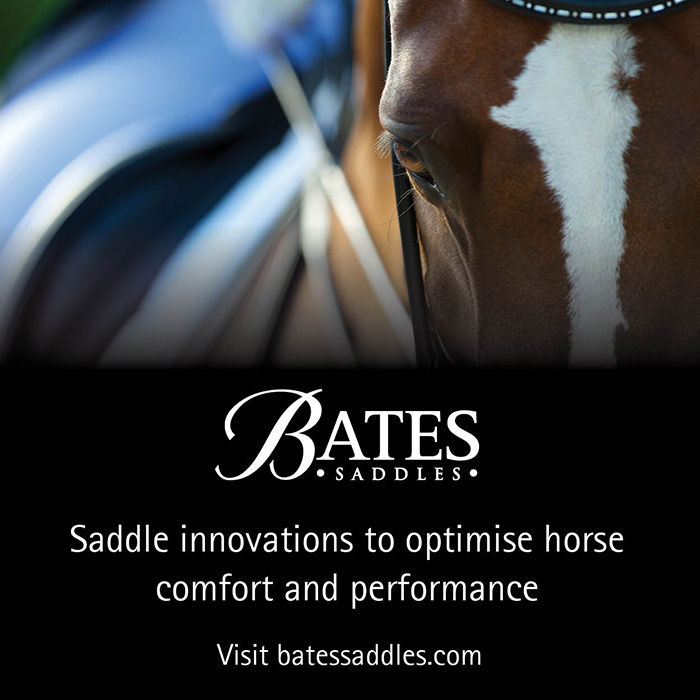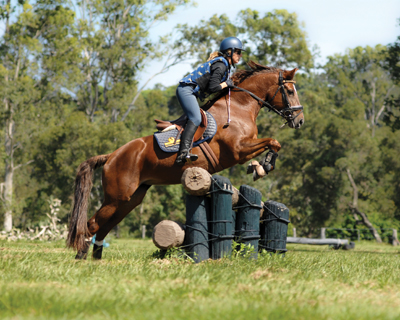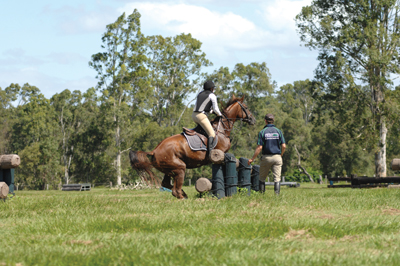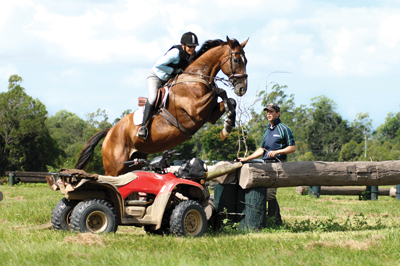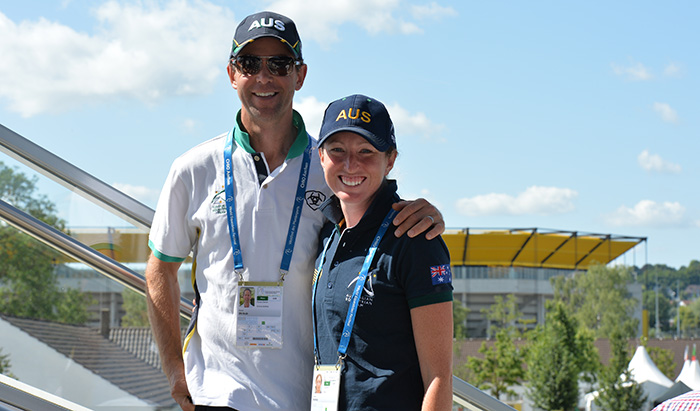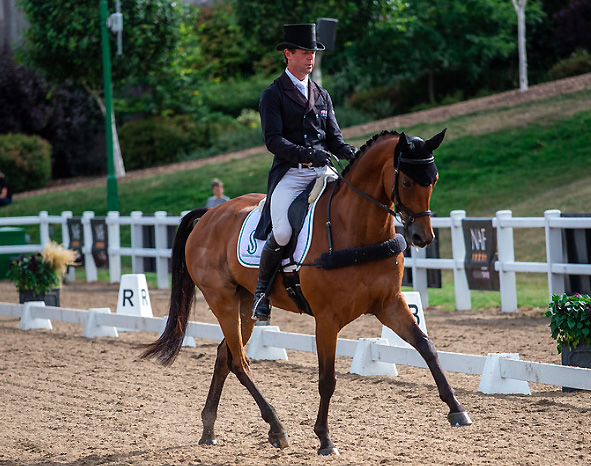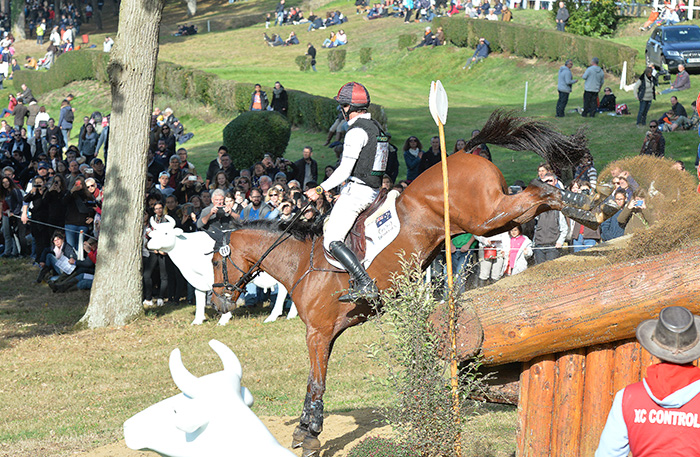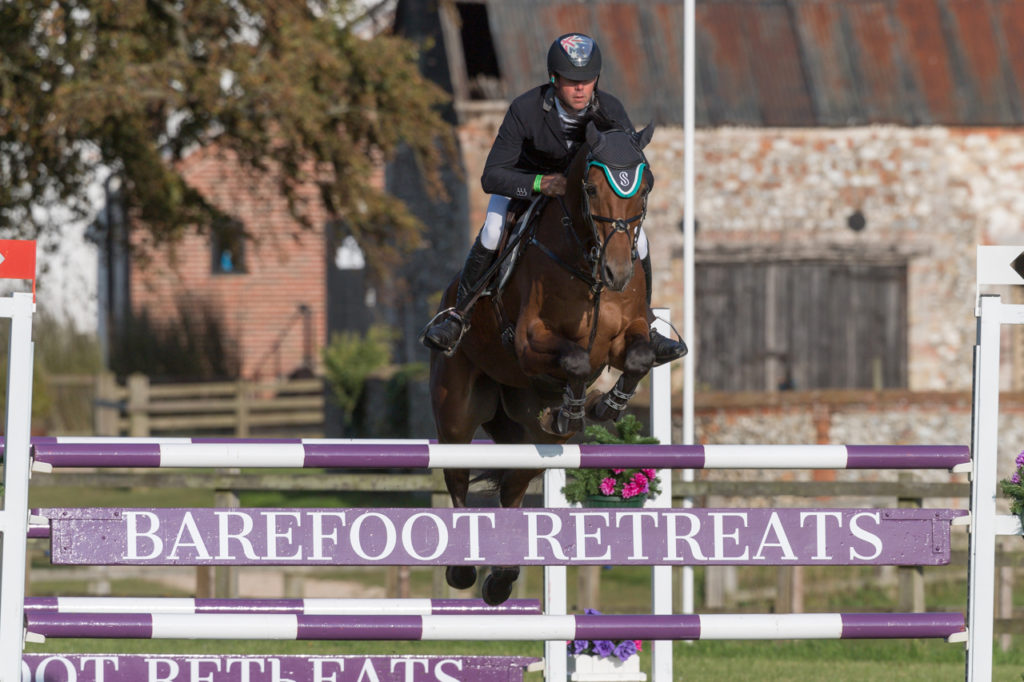Good basics never change, Kevin McNab talks about successful, and safe, cross country riding.
Finding a good coach is like selecting the right stallion – the proof is in the progeny, or in this case, the students. There are stallions, who despite their talent and beauty, don’t seem to pass on their attributes to their offspring, just as there are gifted riders who struggle to transfer their skills to a pupil.
It therefore makes sense to examine the trainers top riders have trained with. Like 2010 WEG representative, and one of Australia’s most admired eventers, Christopher Burton. Back in Chris’ early days he spent a year as Kevin McNab’s first working pupil.
Another WEG representative, and the rider everyone was talking about at Kentucky, New Zealand’s Jonathan Paget, literally learnt to ride at Kevin’s Kelecyn Equestrian Centre. Having started his life as a bricklayer, Kevin took him from tradie to three star in just two years.
Then there’s Emma Dougall, member of the Australian Eventing Talent Squad, and winner of just about every event in Queensland for the last few years – also mentored by Kevin. In fact, if you go to any eventing competition in Queensland and question the place getters, you’ll be hard pressed to find one who hasn’t benefited from Kevin’s teaching at one point or another.
Emma is now Kevin’s wife – and she represented Australia at the most recent WEG, Tryon in 2018. Here she is on course with Fernhill Tabasco – Digishots image
Kevin is known for his straightforward approach to schooling, so he was the perfect man to assist both horse and rider in getting fit to compete, and back in touch with the basics, at a Fig Tree Pocket eventing clinic in Queensland.
Story continues below the advertisement
As the group popped over the warm-up fences, Kevin assessed them like fresh pieces of meat, throwing out phrases like, ‘That approach was a little underdone’, ‘She’s fresh, so don’t leave her hanging’, and ‘That’s looking overcooked, come again and think about the rhythm’.
While trying to decipher the deeper meaning of these expressions, Kathy Humphrey was working up an appetite to attack the bigger fences. Kathy has been competing at pre-novice level on her seven-year-old mare, Oxlea Alla Bache, but is hoping to have her first one star start this year. Kathy bred her for dressage, by Jaybee Alabaster out of a Thoroughbred mare, but grew bored and turned to jumping. Kevin had to get them back in the swing of things with some simple reminders:
“Get the canter organised before the jump, think about the rhythm, canter, canter, jump, canter, canter, jump. Trust your canter, you don’t have to get the prefect distance. If you’re a little away, she can jump out of that, she’s got plenty of scope. If she’s in too deep, she can back up. Set yourself up early and then let her read the fence.”
Learning to trust the canter – Kathy Humphrey & Oxlea Alla Bache
Eventers aren’t always known for their strict regimen, but being disciplined certainly comes into play when assessing your ride – separate yourself from the crowd by keeping the little things in check: “Keep your leg on in the approach, the jump, and the departure, don’t slack off, focus on what you’re doing.”
This requires multi-tasking: “Don’t stop to make a correction, make the change within the pace, that’s what you would have to do if this were a competition.”
After a few small logs to warm-up, the big fences took the riders by surprise: “Prepare! Make sure when you start jumping the bigger stuff, you don’t all-of-a-sudden hit him with a big shot of adrenalin, just come with more canter, look to the fence.”
When you’re out of practice you forget how quickly the next jump comes up: “Don’t land with nothing and then take five strides and go, oh I better get organised, it’s too late. Land waiting for the next fence.”
And don’t be half-arsed about it: “Water jumps are made to be attacked, that ride was a little wishy washy, be more definite in your approach. Focus, have a plan, and get it done.”
story continues below the advertisement
Monique Searle was losing faith after a stop on her seven year-old gelding, Jawarra Faith Hill, a Connemara Warmblood cross competing at pre-novice level. Kevin worked out where they went wrong:
Allowing the horse to read the fence – Monique Searle & Jawarra Faith Hill
“You chased her to the fence and held her at the same time, so when she got there she either had to leave the ground a mile away, or she had to stop, she didn’t have the option to back up or chip over the fence, you didn’t give her that option. Don’t dominate her to the fence.” Try this approach instead: “Increase the tempo and sit still, have the canter, but stay soft, then they can back up if they have to.”
The fact is, there’s no perfect distance to a fence, but by reading the horse’s approach, you can allow them to work it out and jump themselves: “If you find you’re going to come in too deep or too far off, don’t chase the horse into nothing, give it the option to back up and operate out of it.”
When putting a few jumps together, it became clear it was the fences with a longer approach that had this affect. Often the rider wasn’t sure how the distance would work out, and in their uncertainty, would send mixed messages to the horse: “Riders are not sure what the horse is going to do, so they grab with their legs and hold with their hands at the same time. If the horse wants to drop his neck and back up to make the jump, they can’t, they simply can’t do it, because the rider won’t let them. It’s no problem off a short run, it’s the longer approach that makes them uncomfortable.”
Kevin knows that lines teach horses and riders, so the next few fences he chose were on lines that kept both horse and rider on their toes. A triple combination with apexes caused problems, with two riders in the group having unplanned dismounts, and another horse getting stuck in the middle.
Kathy learns the hard way…
Kevin deduced the cause of their descent: “It’s not a forgiving fence, you can’t slide one way or the other, because the slightest deviation from your line makes a huge difference to your distance, and if that leads them to the wide end of the apex, the horse won’t read the fence right and they’ll stop, or they’ll take it as a bounce and get stuck, we had both happen, and the others got away with it because their horses were good to them. Riders have to nail the line, if that’s not spot on, then they’ll run into problems.”
story continues below the advertisement
A wing helps guide Trudy Freeman & Room to Zoom over the apex
The downhill bank combination taught a similar lesson: “When you come down the hill, imagine you’re in a channel, stay in the middle. It doesn’t matter if you get a beautiful distance or not, you still have to stay straight. That’s what went wrong with the verticals and apexes, every time someone didn’t get a perfect distance they compromised with their line, but there isn’t any room to compromise with your line, you have to jump straight.”
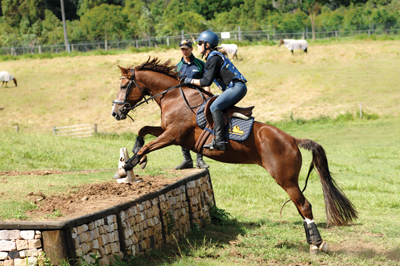 Monique rides keeps Jawarra Faith Hill ‘in the channel’
Monique rides keeps Jawarra Faith Hill ‘in the channel’
Riders have a tendency to hold back when they’re approaching a big drop into the water, but Kevin prefers to make a splash: “Remember, a water fence is designed to be attacked, so you always come positive to it, even if you’re going to land and wait, you have to actually come positive to it. You never want to come to a water fence being backwards, you want to get there attacking, and when you land, and if you want to wait, wait, if you want to move, move.”
A good rider makes it look easy, even when it’s a struggle: “When everything goes perfectly it looks really nice, I’d like it to look just as nice when it doesn’t go perfectly, so you can make a mess of it, and they just hold their line and go straight down the middle. That’s what you should teach the horse to do, they have to hold their line, because you’re not always going to find the perfect distance, it’s nice when the horse is eager to take you to the fence, but you still have to have the final say.”
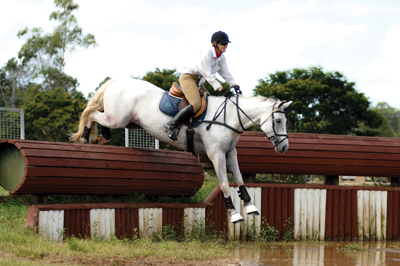 Making the jumps look easy – Linda Perkins & Cait by Kings
Making the jumps look easy – Linda Perkins & Cait by Kings
I get the feeling Kevin is yet to have his final say on the International eventing scene, whether he’s coaching or riding, he’s a natural talent, and proves the path to progress is paved not with quick fixes, but hard work. These are the trainers that stick around, and I for one can’t wait to see what he does next…
Photo update on Emma and Kevin who are now based overseas
At Aachen in 2016
Kevin and Scuderia 18 Don Quidam, at Hartbury, currently rated no 1 on the WBFSH rankings FEI photo – Celeste Wilkens
Kevin competing in Vitara du Causse at the World Young Horse Championships in Lion d’Angers
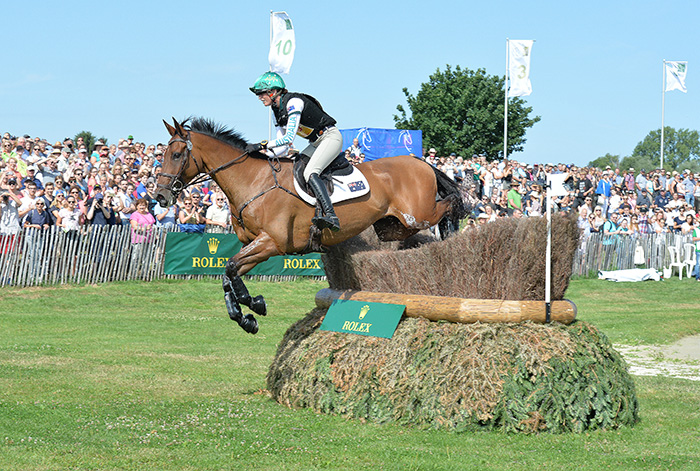 Emma and Fernhill Tabasco at the Aachen selection trial for the Tryon WEG
Emma and Fernhill Tabasco at the Aachen selection trial for the Tryon WEG
Kevin and Scuderia competing at Four-Star level in the UK image Trevor Holt
Original story by Shannon Makauskas, pics Alex Makauskas and photo archive


